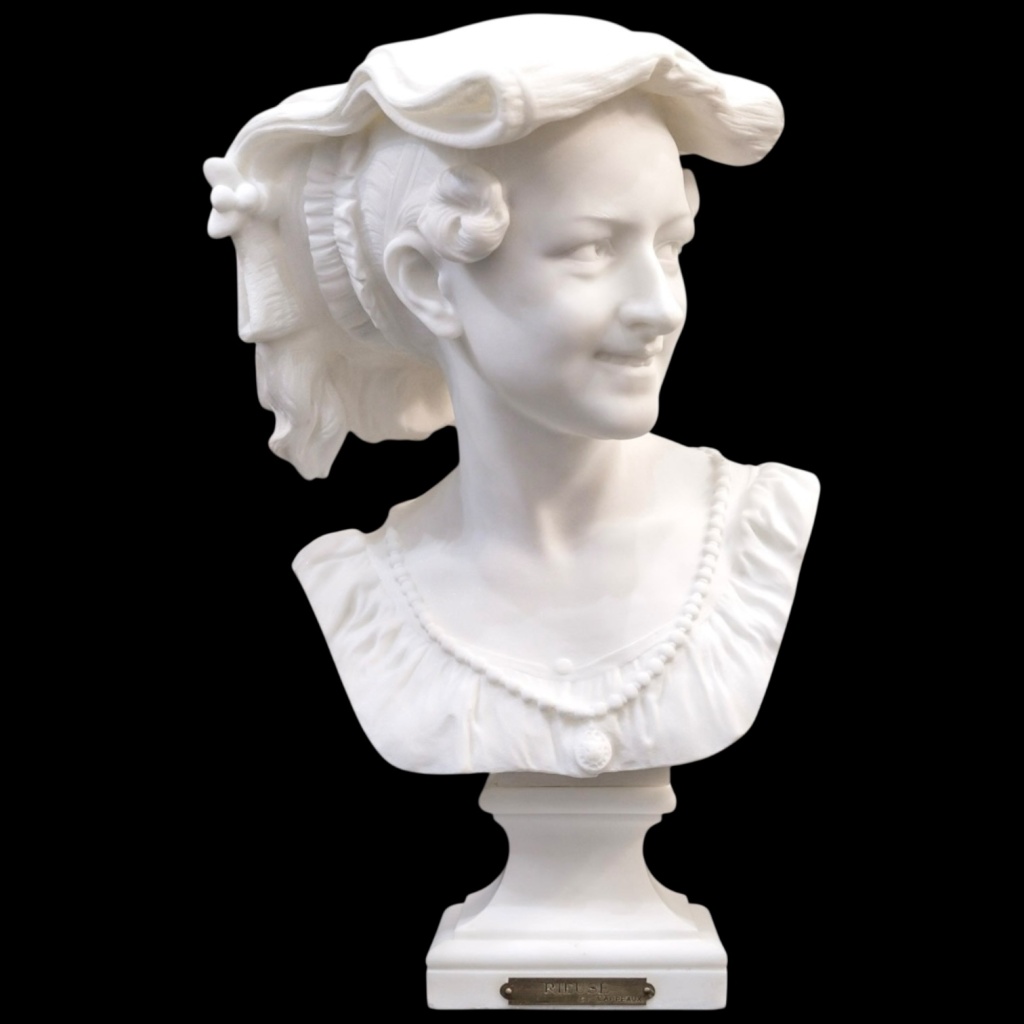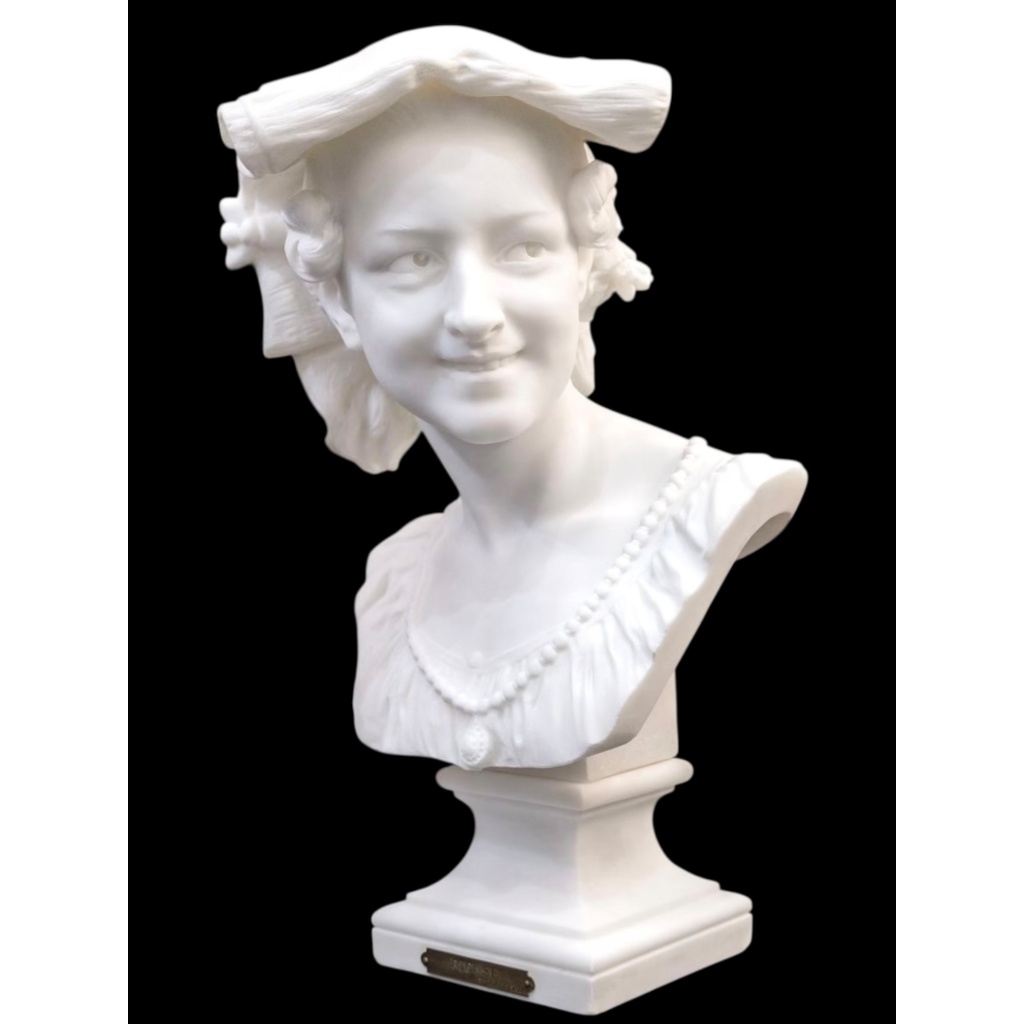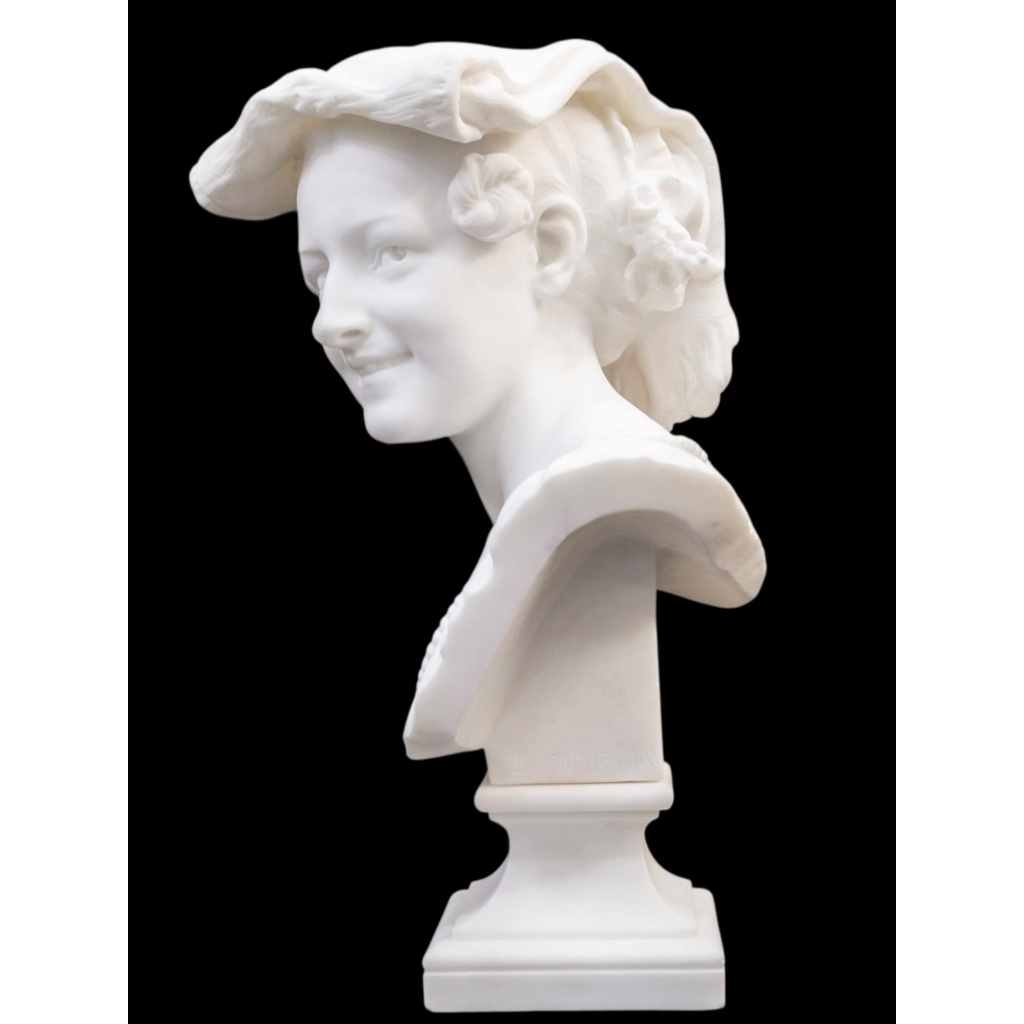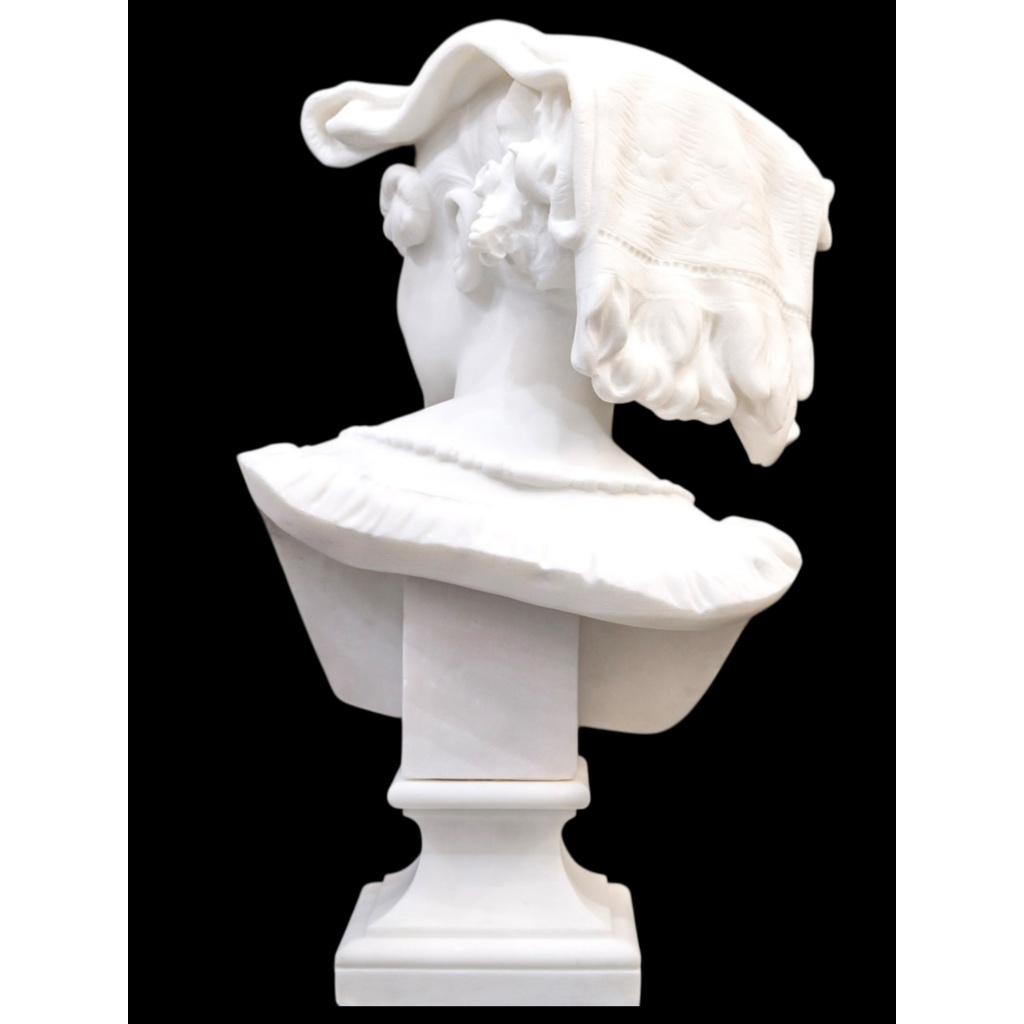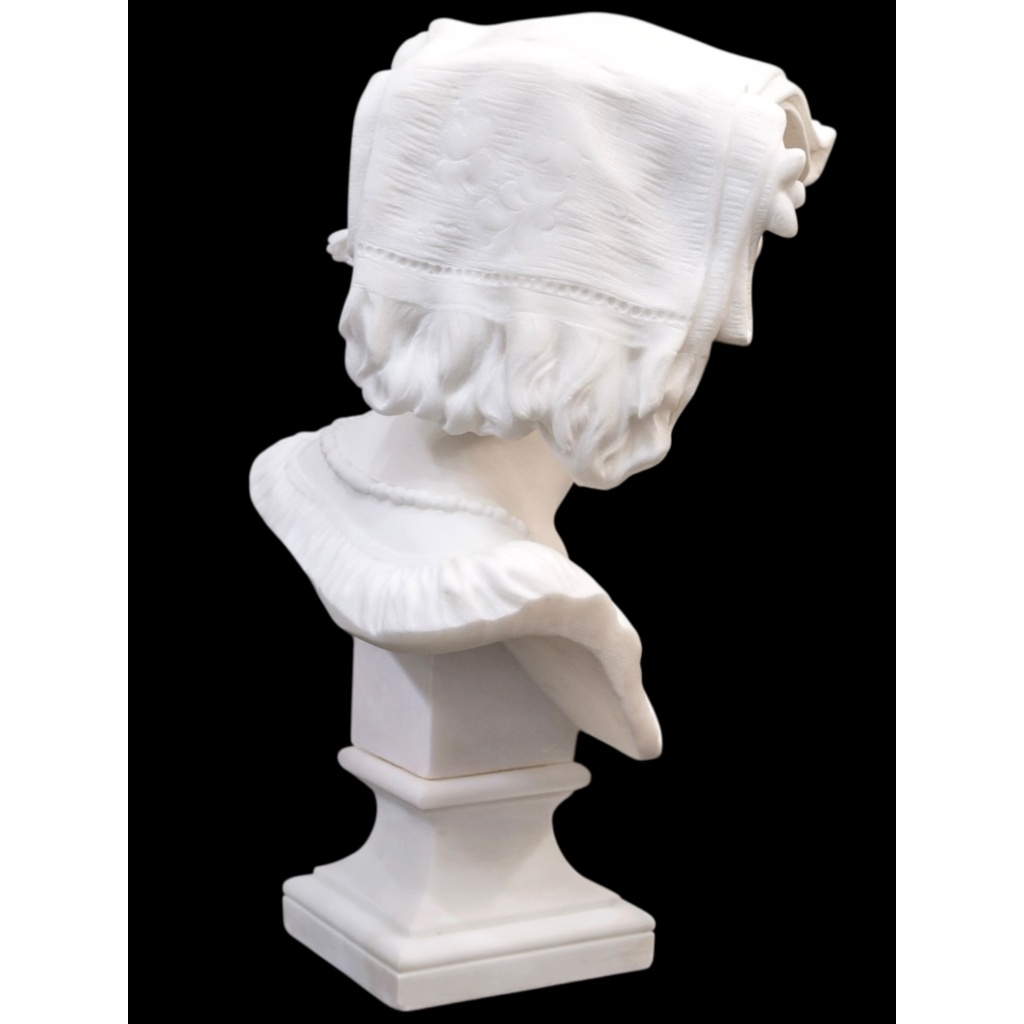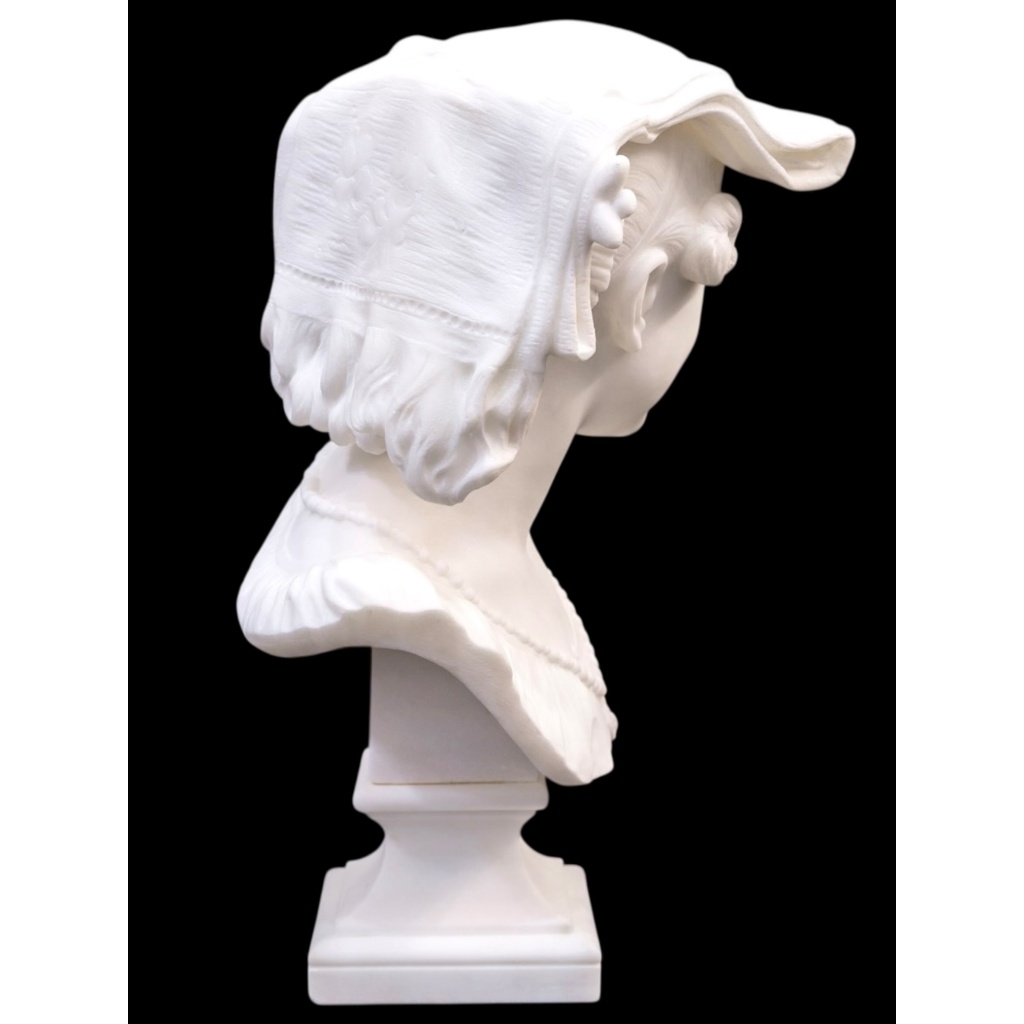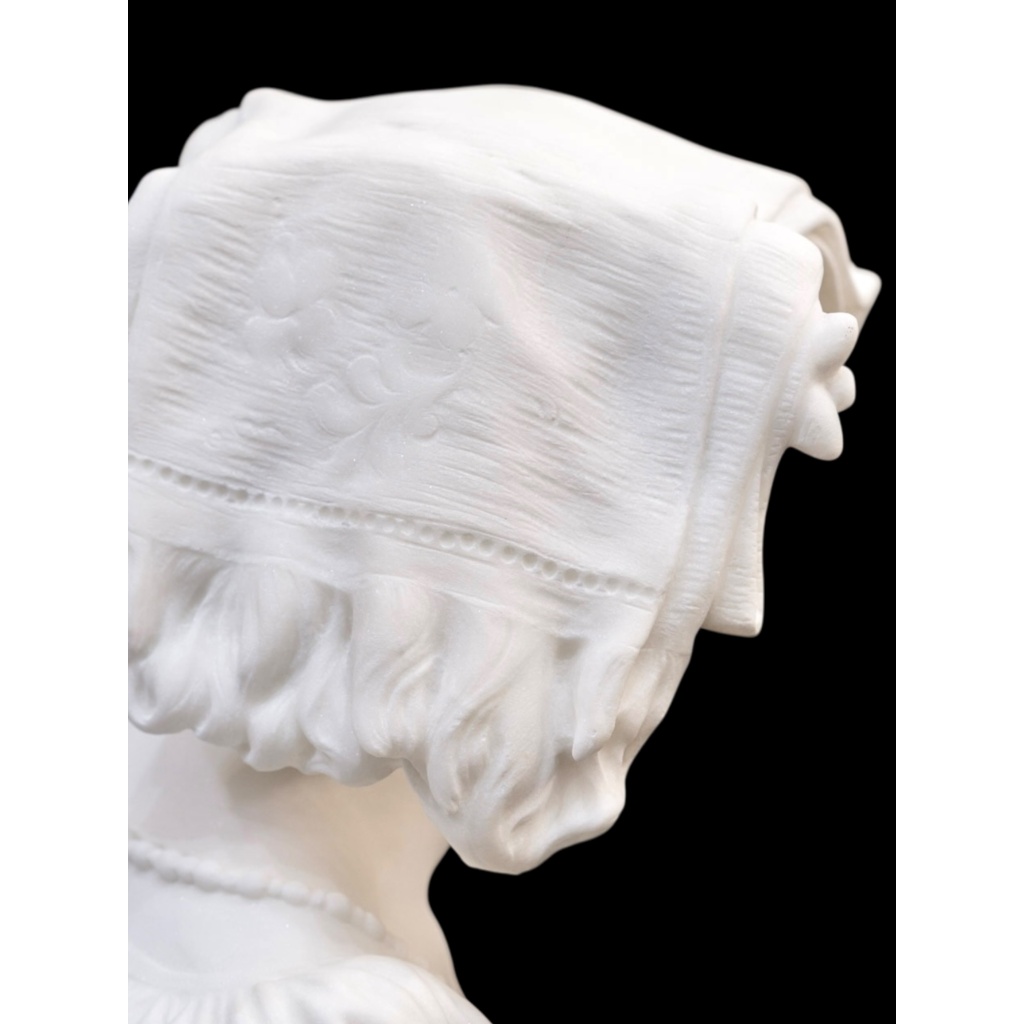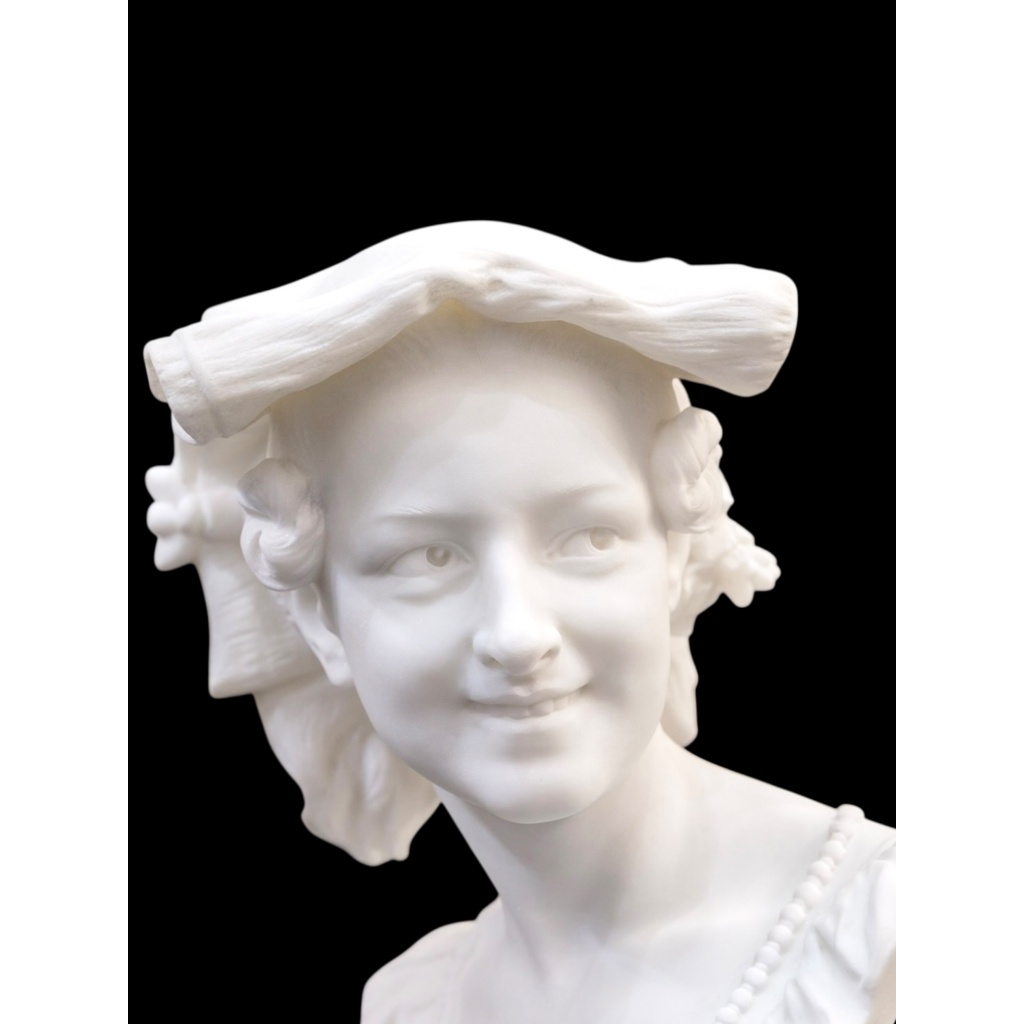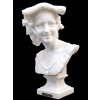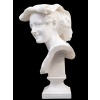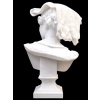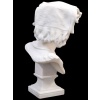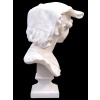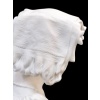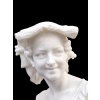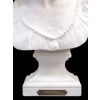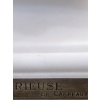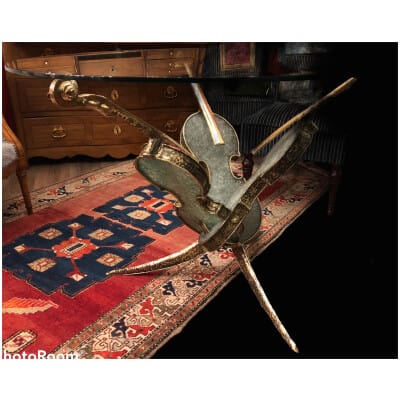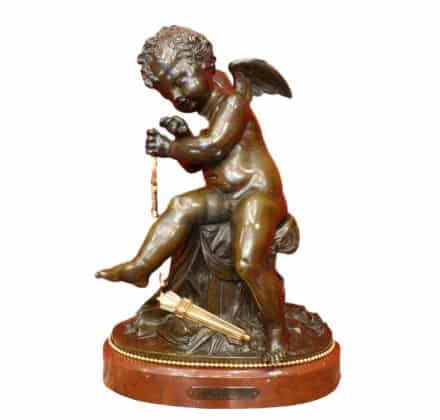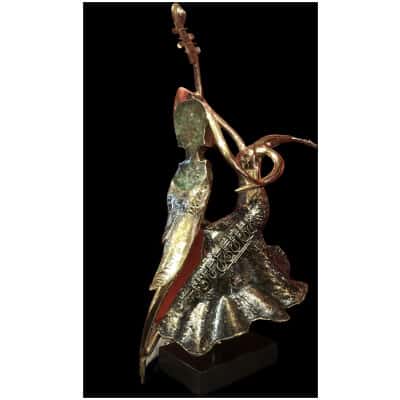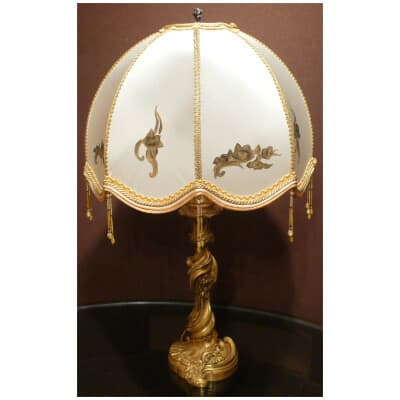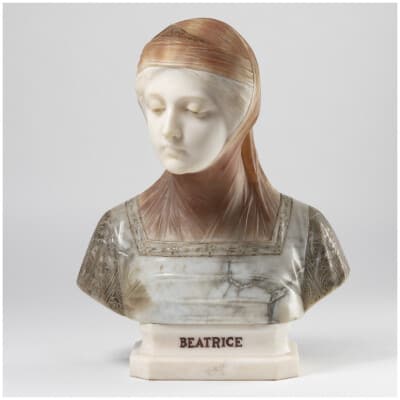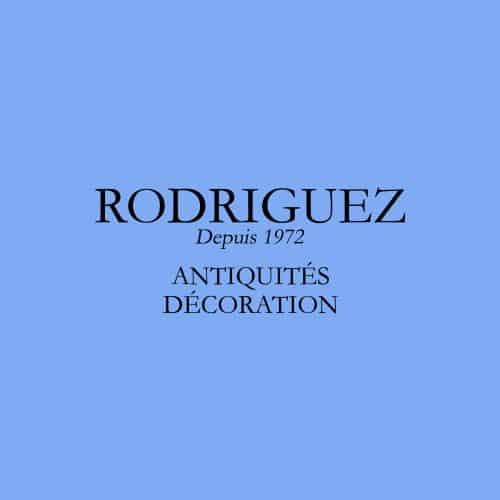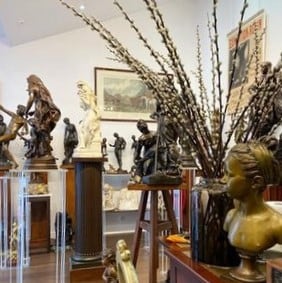
CaTaLogUE Des PucEs
Sculpture – La Rieuse Napolitaine , Jean – Baptiste Carpeaux (1827-1875) – Marbre
Disponibilité :
VENDU€6.000,00
Rare buste en marbre blanc de Carrare , figurant la « Rieuse Napolitaine » , d’après le sculpteur Jean-Baptiste CARPEAUX (1827-1875) .
Il s’agit du portrait d’Anna Foucart , fille aînée de Jean-Baptiste Foucart , ami proche de Jean-Baptiste Carpeaux .
Le sculpteur fait le portrait de la jeune fille en 1860 , et réutilise plusieurs fois ce modèle qu’il adapte en « Rieuse Napolitaine » en 1863 , puis en « Rieuse aux roses » en 1872 .
Ici l’accent est mis sur le costume traditionnel napolitain pour faire pendant au buste du « Rieur Napolitain » qui est un des plus grands succès du sculpteur de Valenciennes .
Marbre titré dans un cartouche « RIEUSE DE CARPEAUX » sur le devant du buste .
Signature du sculpteur « JB-CARPEAUX » .
Sculpture d’édition ancienne , période seconde partie du XIXème siècle .
Parfait état de conservation .
Dimensions : 51 cm x 28 cm
Rare bust in white Carrara marble , representing the »Laughing Neapolitan » , after the sculptor Jean-Baptiste CARPEAUX (1827-1875) .
The portrait is of « Anna Foucart », eldest daughter of Jean-Baptiste Foucart , a close friend of Jean-Baptiste Carpeaux .
The sculptor painted the young girl in 1860 and reused the model several times , adapting it for “Laughing Neapolitan Woman” in 1863 and “Roses in the trees” in 1872 .
Here, the emphasis is on traditional Neapolitan costume, as a counterpart to the bust of the “Laughing Neapolitan”, one of the Valenciennes sculptor’s greatest successes.
Marble titled in a cartouche “RIEUSE DE CARPEAUX” (CARPEAUX’S LAUGHING GIRL)on the front of the bust .
Sculptor’s signature “JB-CARPEAUX” .
Early edition sculpture , second half of the XIXth century .
Perfect state of conservation .
Size : 51 cm x 28 cm

Jean – Baptiste Carpeaux (1827-1875)
Jean-Baptiste CARPEAUX est un célèbre sculpteur français , né le 11 mai 1827 à Valenciennes .
JB.Carpeaux grandit dans une famille modeste d’ouvriers à Valenciennes .
Il aime dessiner et souhaite faire des études de sculpture contre la volonté de son père .
À l’Académie de la ville , il suit les cours de sculpture de « René Fache » et les cours d’architecture de « Bernard » .
Arrivé à Paris en 1838 avec sa famille , JB Carpeaux reçoit une première formation de dessin et de modelage à la Petite École .
En 1844 , il entre àl’École des Beaux-Arts de Paris dans l’Atelier de François Rude .
Dix ans plus tard , il remporte le Prix de Rome .
Son arrivée dans la capitale italienne est différée d’un an , l’artiste devant achever plusieurs commandes .
JB Carpeaux s’installe à la Villa Médicis en janvier 1856 et étudie les grands maîtres : Raphaël , Michel-Ange .
Il voyage en Italie où il puise son goût pour le mouvement et la spontanéité .
De son séjour italien , il sculpte trois envois , « le Petit boudeur » , « le Pêcheur à la coquille » et son « Ugolin entouré de ses quatre enfants » .
En 1862 , rentré à Paris , JB Carpeaux est introduit à la Cour Impériale par son ami et mécène , Eugène d’Halwin de Piennes , bientôt chambellan de l’Impératrice .
Il sculpte la même année un buste de la « Princesse Mathilde » qui lui permet d’obtenir plusieurs commandes de la part de l’Empereur Napoléon III.
Mais chacune de ses œuvres , où éclatent ses conceptions naturalistes et son désir de restituer le mouvement inspiré du style baroque , fait l’objet de polémiques .
JB Carpeaux participe à la décoration extérieure du Pavillon de Flore au Palais du Louvre (Le Triomphe de Flore , jugé alors trop sensuel) , et à l’Opéra nouvellement construit par Garnier , avec un haut-relief La Danse , indignant le public par sa liberté et son réalisme .
Il collaborera avec l’architecte Gabriel Davioud pour sa dernière œuvre , la Fontaine des Quatre-Parties-du-Monde dite aussi Fontaine de l’Observatoire à Paris .
Les dernières années de sa vie sont sombres .
La guerre et la défaite de 1870 tarissent les commandes .
À la même époque , JB Carpeaux développe , à l’égard de sa femme , une jalousie maladive qui conduit à la séparation du couple en 1874 .
Sous l’influence de ses parents , à court d’argent , il abandonne la direction de son Atelier à son frère .
En 1875 , il meurt à quarante-huit ans , après d’atroces souffrances dues à un cancer de la vessie.
Jean-Baptiste Carpeaux, très attaché à sa ville natale , lègue une partie de ses œuvres au Musée des Beaux-Arts de Valenciennes .
Jean-Baptiste CARPEAUX (1827-1875)
Jean-Baptiste CARPEAUX is a famous French sculptor , born on May 11 , 1827 in Valenciennes .
JB Carpeaux grew up in a modest family of workers in Valenciennes.
He liked to draw and wanted to study sculpture against his father’s wishes .
At the Academy of the city , he followed the sculpture courses of « René Fache » and the architecture courses of « Bernard » .
Arriving in Paris in 1838 with his family , JB Carpeaux received his first training in drawing and modeling at the Petite École .
In 1844 , he entered the School of Fine Arts in Parisin the Studio of François Rude .
Ten years later , he won the Price of Rome .
His arrival in the Italian capital was delayed by a year , as the artist had to complete several commissions .
JB Carpeaux settled at the Villa Medici in January 1856 and studied the great masters : Raphael, Michelangelo .
He traveled to Italy where he drew his taste for movement and spontaneity .
During his stay in Italy, he sculpted three envois, « the Little Sulker », « the Fisherman with a Shell » and his « Ugolino surrounded by his four children ».
In 1862 , back in Paris , JB Carpeauxwas introduced to the Imperial Court by his friend and patron , Eugène d’Halwin de Piennes , soon to be chamberlain of the Empress .
In the same year , he sculpted a bust of « Princess Mathilde » which allowed him to obtain several commissions from Emperor Napoleon III .
But each of his works , which showcase his naturalist conceptions and his desire to restore the movement inspired by the Baroque style , was the subject of controversy .
JB Carpeaux participated in the exterior decoration of the Pavillon of Flore at the Louvre Palace (The Triumph of Flore , considered too sensual at the time) , and at the newly built Opera by Garnier , with a high relief « The Dance » , outraging the public with its freedom and realism .
He collaborated with the architect Gabriel Davioud for his last work , « The Fountain of the Four Parts of the World » , also known as « The Paris Observatory Fountain ».
The last years of his life were dark .
The war and the defeat of 1870 dried up the orders .
At the same time , JB Carpeaux developed a pathological jealousy towards his wife , which led to the couple’s separation in 1874 .
Under the influence of his parents , short of money , he left the management of his studio to his brother .
In 1875 , he died at the age of forty-eight , after atrocious suffering due to bladder cancer .
Jean-Baptiste Carpeaux , very attached to his hometown , bequeathed part of his works to the Museum of Fine Arts in Valenciennes .
Disponibilité :
VENDU| Lieux | |
|---|---|
| Siècle | |
| Style | |
| Type d'Objet |
Partagez cette fiche :
Produits similaires
-
-
-
-
Objets de Collections
Giuseppe Bessi (1857-1922), Beatrice, sculpture en marbre et albâtres, XIXe
